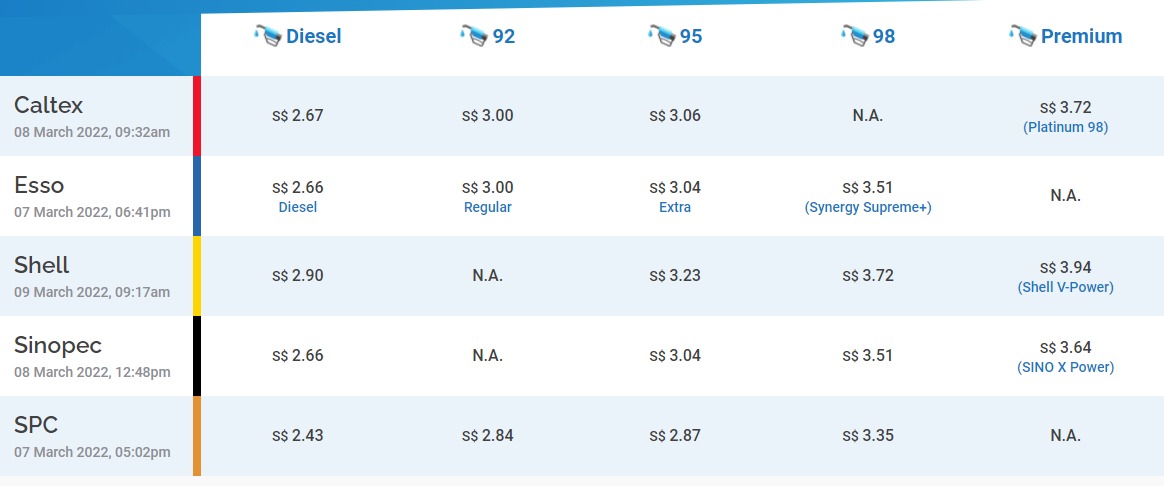The Ukraine-Russia conflict, which began in 2014, and now, Russia’s invasion (or “special military operation”) of Ukraine on 24 February 2022, has come as a shock to the international community, including Singaporeans. On 28 February 2022, the Singapore government reiterated its support of international law and the principle that all countries, big and small, must be respected.
Acting in concert with many other like-minded countries, Singapore will impose financial measures targeted at designated Russian banks, entities and activities in Russia, and fund-raising activities benefiting the Russian government. It will also impose export controls on items that can be directly used as weapons to inflict harm or subjugate Ukrainians, as well as items that contribute to offensive cyber operations.
While on the geopolitical front, most homeowners in Singapore understand the situation, including the plight, suffering and political stance on both sides, there are signs that the conflict has hit closer to home. Here are three immediate signs the Ukraine-Russia conflict may or will impact you – the homeowner and your family – as this drags on.
Higher fuel prices mean more of us will stay home and drive less
If you’ve been driving to and from home and work since the change in WFH restrictions, a chanced refuelling stop at your friendly neighbourhood petrol station will leave you gobsmacked by the prices of fuel (even diesel) today. Yep, some 92- and 95-octane petrol prices at petrol kiosks have crossed the S$3 mark. In January 2021, the price of petrol was about S$1.90 per litre!
Based on Fuel Kaki’s March 7-9 pricing updates, Shell’s 95-octane fuel is at S$3.23 per litre, which saw several rounds of increases in the past weeks. Esso’s currently (at the time of writing) at S$3.04, Caltex’s at S$3.06, Sinopec’s at S$3.04 and SPC is at S$2.87. Expect these prices to change (upwards) as the conflict continues.

The reason why petrol prices have increased is that Brent crude – the trading benchmark for crude oil prices per barrel – has breached the US$130 per barrel mark and may spike to US$200. This comes as the United States explores the possibility of banning Russia’s crude imports. This is the highest the benchmark price has been since July 2008. Then, due to the worsening Global Financial Crisis, the price was US$147.50 per barrel.
It should also be noted that Russia is the world’s top exporter of crude and oil products – exporting about seven million barrels of oil and refined products per day. That’s 7% of the global supply.
What this means for homeowners, who are already in the throes of scrounging up and saving during the pandemic, inflation and impending interest rate hike, is that more of them will drive less. In other words, most of us will stay home more often during weekdays and weekends (more self-imposed WFH and Stay-at-Home). We may take shorter trips rather than longer ones – so what used to be a drive into downtown CBD or Orchard Road may now be just a stop at your neighbourhood mall.
Quite possibly, some car owners may opt for public transport, but they should time their travels if they want to avoid over-crowding and adding more stress when it comes to social distancing compliance.
Higher transport costs will trickle down to the cost of goods and services
With higher fuel prices, transportation costs will rise. This will affect entire economies that rely on the transportation or shipments of goods, workers and services. Even calling Ah Seng to fix your home light-bulb or chemical-clean your air-con will potentially see a price increase because they have to travel to your house.
This also translates into higher food prices, since Singapore doesn’t grow all of its food supplies, thus most of them will need to be transported or shipped in.

Pay close attention to the price of bread and flour, as Russia and Ukraine produce almost a quarter of the world’s wheat supply, so with their supplies cut off, producers will need to import their supplies from elsewhere, which then translates into higher costs. Besides that, the two countries are also major exporters of barley, corn and sunflower seed oil. We reckon most households will reduce consumption of these food items if there are significant price increases over the short term.
While we’ve yet to see signs or implications from this, we also suspect your Taobao, Shopee, Lazada deliveries will cost more, especially if they’re shipped from overseas. It may also affect islandwide-based food deliveries since they need to spend fuel to travel quite a distance from the food outlet to your doorstep.
Granted, these innovative platforms may have discounts and coupons to absorb some of these cost increases in the short term, but over time, if fuel costs continue to rise, these costs will add up and influence the way homeowners make routine decisions on a daily basis.
Higher electricity costs mean greater demand for fixed-rate subscription plans
One of the biggest cost increases will likely come from electricity. Ninety-five per cent of Singapore’s electricity is generated through imported natural gas. So when there are an unexpected global energy crunch and supply disruptions, Singapore’s electricity tariffs will be impacted.
It also doesn’t help that wholesale electricity prices have been soaring since September last year when there was a global energy crisis due to fuel shortage. Also, as early as 30 December 2021, even before the Ukraine-Russia escalated conflict, Singapore’s energy suppliers have already warned Singaporeans that electricity and gas tariffs will increase in Q1 2022. Then, the expected electricity tariff for households is set to increase to S$0.2544 per kWh (from S$0.2411 previously). So a family living in a 4-room HDB flat will see a monthly electricity bill hike of S$4.70 before GST.
What this means is most homeowners will choose to go for more fixed-rate electricity subscription plans rather than hybrids (eg. on and off-peak) or variable-rate (discount off regulated tariff) plans.
Look at what happened to Changi Green condominium, where residents may have to fork out more for their maintenance fees due to surging electricity bills (and if they’re unable to secure a long-term fixed-rate plan based on a vote). In this report, Mr. Nicholas Chew, the Management Corporation Strata Title (MCST) chairman of the condominium, was shocked when the electricity bill tripled from S$6,500 to S$19,500 in December 2021.
When the MCST’s former OEM retailer i-Switch closed shop in November, the condo committee switched to buying from the wholesale market, where prices vary every half-hour. After that bill shock, the MCST scrambled to secure a long-term fixed-rate subscription plan while deploying immediate cost-saving measures like switching off air-conditioners in some facilities.
Indirectly, companies and services that require the use of electricity 24/7, such as data centres, cybersecurity firms, security monitoring companies, 7-eleven stores, international news organisations and so on will need to re-evaluate their electricity costs at some level. If they’re unable to absorb or redistribute them, these costs or the costs of their subscriptions and services may trickle down to end-users as well.

With the exception of fuel prices, most of these signs may not be apparent just yet. This is because most countries, including Singapore, have well-stocked reserves in place and a robust supply-chain strategy with neighbouring countries. But still, if you’re a prudent spender, monitor these signs over the next few weeks, especially for durable goods like food items.
If you’re a family person who frequently drives your family around Singapore during the weekends, maybe it’s time to consider riding the bicycle around your neighbourhood in the meantime.
–
Do you have any thoughts on the Ukraine-Russia conflict and how it has affected you? Let us know in the comments section below or on our Facebook post.
If you found this article helpful, check out Open Electricity Market: Which remaining OEM Plan should homeowners take? and Can the Oil Price Crash Affect Singapore’s Property Market?
Looking for a property? Find the home of your dreams today on Singapore’s fastest-growing property portal 99.co! If you would like to estimate the potential value of your property, check out 99.co’s Property Value Tool for free. Also, don’t forget to join our Facebook community page or Telegram chat group! Meanwhile, if you have an interesting property-related story to share with us, drop us a message here — and we’ll review it and get back to you.
The post 3 immediate signs the Ukraine-Russia conflict will affect homeowners in Singapore appeared first on 99.co.

